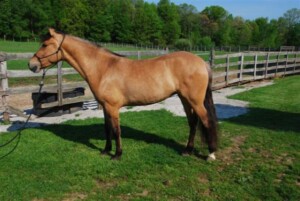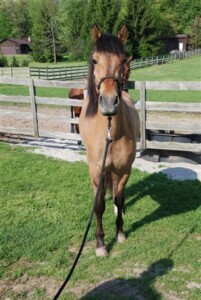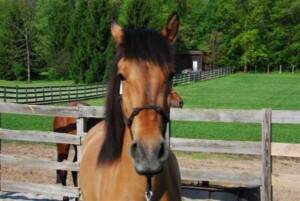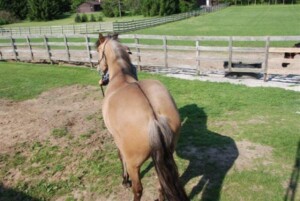~ How to Photograph Your Horse ~
Taking pictures of your horse for registration can seem like a daunting process. Those photographs are used to visually inspect your horse, using a set list of criteria for the breed. Conformation is the foremost consideration that KHAR inspectors examine.
The Kiger Mustang should ideally be correct in its overall structure. The conformation of your Kiger Mustang impacts how useful a horse is for pleasure riding. For example, a short, steep shoulder causes a shortened, choppy stride that is uncomfortable to ride. Each conformation characteristic of your horse (from his head to his hooves) is considered during the inspection process.
The last thing evaluated is the horse's breed type. Breed type are those characteristics that set a Kiger Mustang apart from another breed, such as Norwegian Fjord or Quarter Horse. Breed type includes physical conformation that is specifically Kiger, as well as more generalized traits such as dun factor.
So, keep in mind that your horse will be evaluated when KHAR inspectors view your submitted photos.
Here are some tips for getting good pictures:
- Don't take pictures in the shade or with a shadow cast across your horse.
- Make sure your horse is standing on level ground.
- Make sure your horse has its feet underneath it and is standing square.
- Your horse should be standing still. Trotting or running pictures may also be provided to show movement, but standing still photos are a must.
- Make sure that your horse's hooves are visible in the photographs (no deep grass or mud). We recommend a clean, dry, flat surface for posing your horse.
- Close-ups of your horse's dun factor are always recommended.
- Make sure that your horse almost fills the entire view. A distant horse standing in the field doesn't help our inspectors.
- You can always include more photos than the required amount.
- Do not use cosmetics or other colorants to change or enhance your horse's colors.
- You must include a photograph of the dorsal. Dorsals can be difficult to photograph. Most people perch on a secure gate or fenceline to elevate themselves in order to capture the entire dorsal. Be sure that you can see on the photo where the dorsal enters into the mane and tail. It might require more than one photo to accomplish this.
Do "Set-up" Your Horse
While we don't necessarily want you placing your horse's feet square, we do want you to present your horse at its best. Head up, alert, legs in natural position on level ground. For best results, a side picture should be taken exactly perpendicular to the horse. Aim your camera at about where the cinch area of the horse is. The horse should fill up most of the print.
Our inspectors need to be able to determine your horses conformation, from the angle of the pasterns to the angle of the shoulder and all points in between. They need to determine if your horse is balanced. Be aware that our inspectors are not just looking for proper Kiger Mustang characteristics but also proper saddle horse conformation.
See below for examples of how to set up your horse for inspections.
Don't Do Movement Photos

Movement photos are good for showing movement, but the inspectors need photos of your horse standing still in order to determine its conformation. The photo above shows that the colt has leg barring, a refined face, and a level back, but not much else.
Don't Do "Liberty" Photos
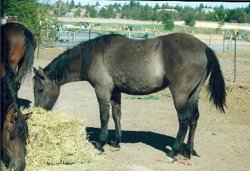
Inspectors must evaluate your horse based on the photos you submit. A horse eating or just lounging about will not be standing square. Its posture and the way its legs are positioned could make it appear to have conformation faults that it really doesn't have. You want to present your horse looking its best.
Sample Photos
Below are a series of photos that demonstrate how to properly photograph your horse to meet the registration requirements. Click on the pictures to see larger images.



